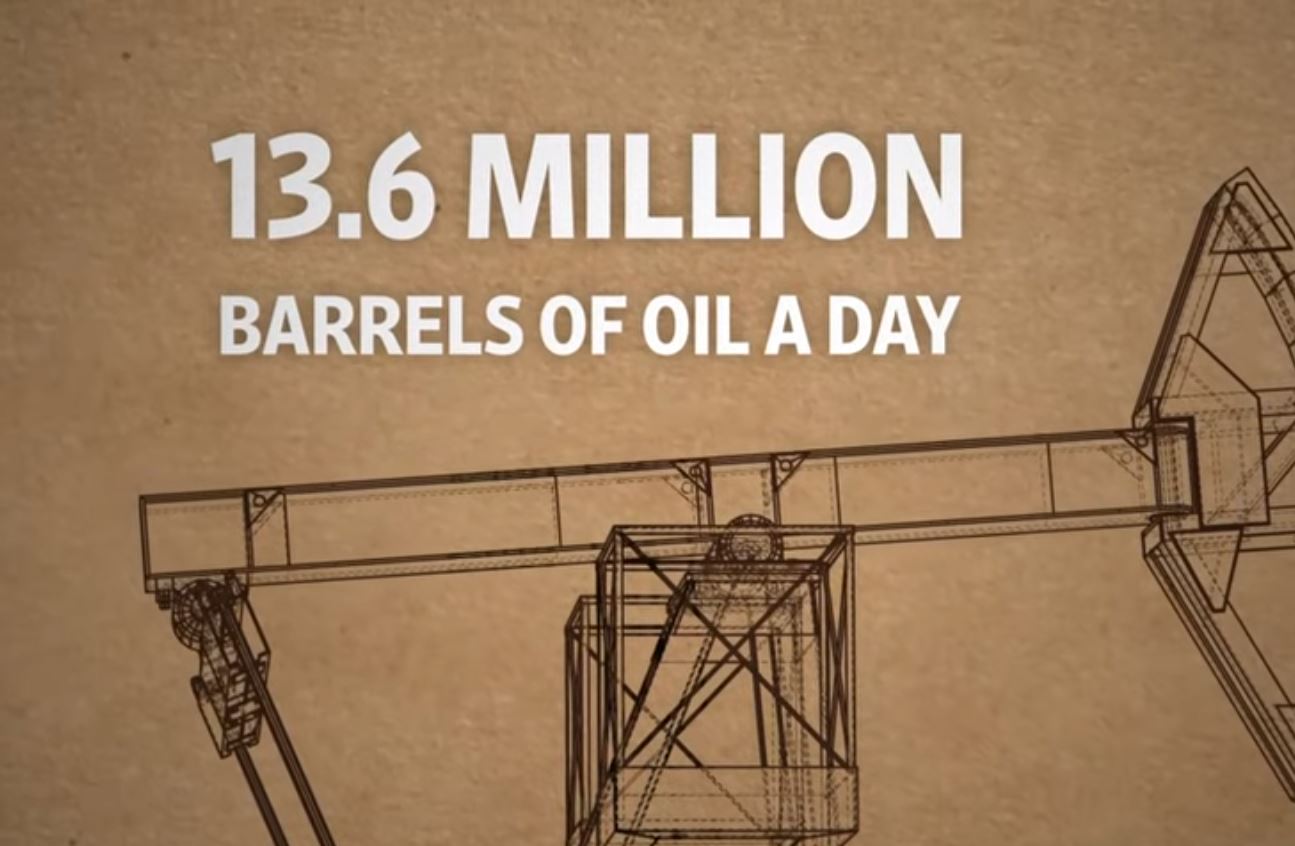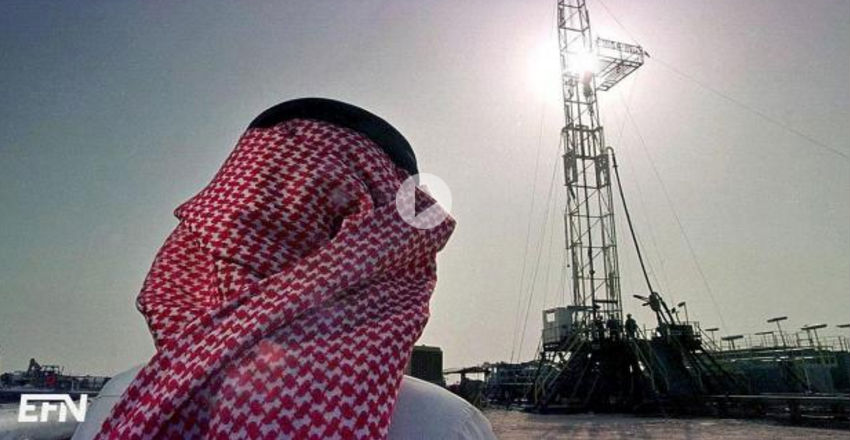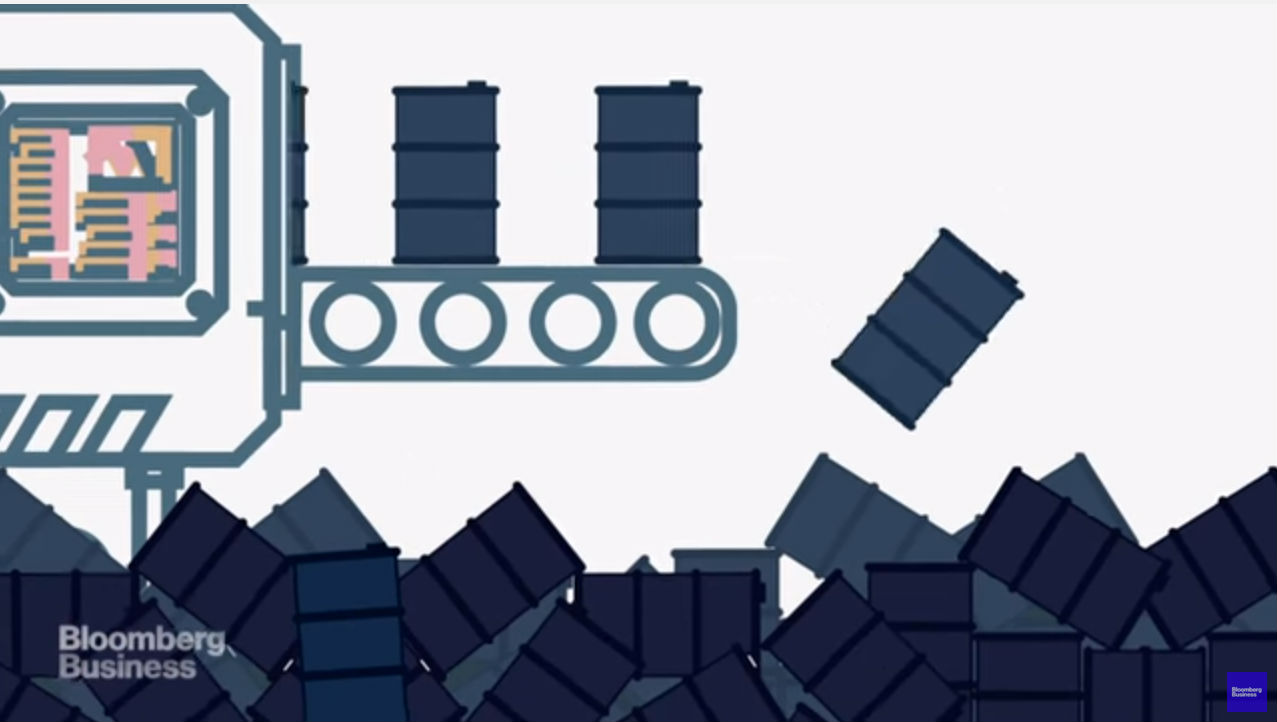Analys
Det stora spannmålsrånet
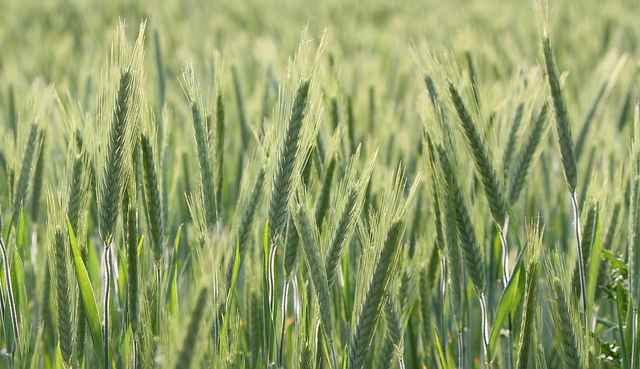
Det stora spannmålsrånet, eller The Great grain robbery, också känt som The Russian wheat deal, refererar till när det forna Sovjetunionen 1972 köpte betydande mängder spannmål, främst vete och majs men också sojabönor, av USA till låga priser. Orsaken till att Sovjetunionen köpte sådana mängder spannmål från USA berodde på att Sovjetunionen drabbats av en betydande torka som förstörde 20 procent av landets skördar.
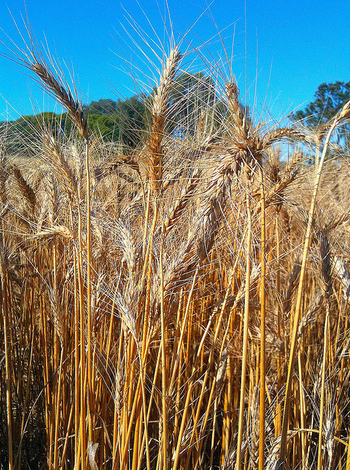 Egentligen hade Sovjetunionen börjat köpa amerikanskt spannmål redan innan, trots det kalla kriget som då rådde och gjorde att det i princip var omöjligt för amerikanska företag att handla med företag i Östeuropa.
Egentligen hade Sovjetunionen börjat köpa amerikanskt spannmål redan innan, trots det kalla kriget som då rådde och gjorde att det i princip var omöjligt för amerikanska företag att handla med företag i Östeuropa.
De stora köpen kom under perioden juli och augusti 1972, när Sovjetunionen köpte 440 miljoner bushels vete, cirka 25 procent av USAs skörd det året, till ett pris om 700 MUSD. Från början var det endast tänkt att Sovjetunionen skulle köpa spannmål till ett värde om 150 MUSD, men i all tysthet signerade den amerikanska regeringen ett treårigt avtal med Sovjetunionen enligt vilket de styrande i det stora landet i öst förband sig att köpa stora mängder spannmål från USA.
Sovjetunionen gjorde sedan ytterligare köp från en rad olika spannmålshandlare. Sovjetunionen använde en kredit på 750 MUSD som landet hade fått från den amerikanska regeringen samt 500 MUSD av sin egen hårdvaluta för att köpa majs, vete och sojabönor. Sovjetunionen köpte när priserna var låga och i all tysthet, faktum är att det tog flera månader innan det kom ut att Sovjetunionen agerat så pass tungt på köpsidan. När detta väl läckte ut kom spannmålspriserna att explodera uppåt.
De högsta spannmålspriserna på 125 år
Händelsen ledde sedan till de högsta spannmålspriserna på 125 år i USA, en av de verkliga tjurmarknaderna som varade mellan 1972 och 1973. Under en femmånadersperiod 1973 handlades sojabönorna till 8 USD per bushel och noterade sedan en toppnotering på Chicago Board of Trade på 12,90 USD per bushel. Mindre än ett år tidigare hade sojabönorna handlats till 3,31 USD per bushel, en prisuppgång på 390 procent. Att priserna steg så pass kraftigt var inte enbart en effekt av Sovjetunionens köp, det sammanföll med en torka i Australien och av att Indien vid detta tillfälle kom att bli en stor aktör på de globala råvarubörserna, i detta fall som en stor köpare av spannmål.
Samtidigt kom ett antal av USAs spannmålsexportörer att göra stora vinster på denna affär, uppskattningsvis kunde de dela på 300 MUSD av de amerikanska skattebetalarnas pengar. Att händelsen kom att bli känd som The Great grain robbery är således inte så konstigt. Flera av dessa spannmålshandlare hade dessutom agerat som köpare, i syfte att hedga det spannmål de sålde till Sovjetunionen så hade de köpt vete, majs och sojabönor på råvarubörserna. När de sovjetiska spannmålsköpen blev allmän kännedom ledde det till att råvaruhandlarna gjorde enorma vinster. Det förekom också beskyllningar om att Sovjet hade köpt stora mängder terminskontrakt i syfte att göra vinster som skulle finansiera köpen av den fysiska spannmålen. Senare ledde detta till att en rad anklagelser om att insidertrading hade skett, men inga åtal väcktes och det gick inte att påvisa att det förekommit någon otillbörlig marknadspåverkan trots senatsförhör och liknande undersökningar. Det enda signifikanta resultatet av detta var att konsumenterna drabbades av högre priser på spannmålsprodukter.
Neil Sanders, Londonbaserad detaljhandelsanalytiker, sade att vetekrisen 1973 bidrog till att priset på en limpa bröd steg med 87 procent, från 10,1 pence, till 18,9 pence året efter. I slutet av 2011 låg priset på motsvarande limpa i England på 84 pence. Även andra livsmedel som till exempel pasta, foder och i förlängningen kyckling och kött kom också att påverkas, om än i mindre omfattning.
Vid FN:s mat och jordbruksorganisation, FAO, i Rom, säger ekonomen Abdolreza Abbassian att det är ländernas regeringar som skall ta skulden i de fall konsumenterna drabbas av spannmålskriserna. Han säger att världen blivit för fokuserad på vete från Svarta havs-regionen. Skördarna i detta område är emellertid mindre pålitliga än det spannmål som odlas i stabilare regioner som Kanada och USA. Enligt Abbassian måste det vidtas åtgärder för att mildra effekter av händelser som torka eller skyfall.
Ryska spioner avlyssnade råvaruhandlarnas telefoner
The Great grain robbery var en lysande insats som bland annat inbegrep den före detta spionorganisationen KGB som avlyssnade råvaruhandlarnas telefoner. Målet med detta var att de ryska spannmålshandlarna skulle kunna hitta de lägsta priserna och kunna köpa spannmålet där det var billigast utan att driva upp priset. På detta sätt kom Sovjet åt 300 MUSD av de amerikanska skattebetalarnas pengar i form av exportsubventioner, i en tid då den amerikanska regeringen var ute efter att lindra de kroniskt låga spannmålspriser genom att uppmuntra spannmålsexport.
Efterdyningar
The Great grain robbery var en av de ekonomiska händelser som kom att ändra världen för alltid. Det stora spannmålsrånet ledde till nya, stränga rapporteringsregler för de amerikanska råvaruhandlarna, regler som gäller än i dag. Det stora spannmålsrånet kom också att leda till en massiv ökning av råvarupriserna i allmänhet, och bidrog till att driva den amerikanska ekonomin till både recession och stagflation. Detta resulterade sedan i vad som kom att kallas för Reaganomics.
President Nixon införde ett exportförbud av sojabönor för att bromsa ytterligare prishöjningar på sojabönor. Detta partiella embargo ledde till kritik från utlandet eftersom det ledde till att amerikanska kontrakt upphävdes.
En bomullskris uppstod 1973 och 1974 där priset på bomull nästan fördubblats under en sexmånadersperiod. Ungefär 500 stämningar lämnades in avseende bomullskontrakt som hade baserats på lägre priser. Samtidigt steg priset på majs kraftigt. Matpriserna världen över steg med cirka 50 procent under de första sex månaderna av 1973. Livsmedelspriserna exploderade igen 1974.
U.S. General Accounting Office släppte en rapport i juli 1973 som säger att försäljningen hade misskötts och bidrog till att pressa upp livsmedelspriserna. Spannmålsförsäljningen ledde dessutom till att de amerikanska skattebetalarna tvingades till att betala onödiga subventioner. GAO sade att Ryssland borde ha betalat högre priser för det spannmål landet köpte vilket skulle ha minska subventionerna till spannmålsföretagen, och att jordbrukarna inte drog någon nytta av veteaffären, utan att det endast var de exporterande spannmålsföretagen som gjorde vinster på detta.
”The Big Grain Robbery” är ett perfekt exempel på vad som händer när utbud och efterfrågan kullkastas på spannmålsmarknaderna.
1987 kom Sovjetunionen tillbaka till spannmålsbörserna
1987 kom sedan Sovjetunionen tillbaka till de globala spannmålsmarknaderna och genomförde tillsammans med Reaganadministrationen en ny affär i amerikanskt vete. Sovjetunionen köpte då fyra miljoner ton motsvarande 147 miljoner bushels, av det amerikanska vetet. Detta vete motsvarade cirka åtta procent av det amerikanska veteöverskottet på 1,88 miljarder bushels vete.
Hur kunde detta ske?
Under hela det kalla kriget, hade de ryska bönderna utmaningar i form av det ryska klimatet och de tvivelaktiga sovjetiska jordbruksmetoderna, något som gjorde missväxt till ett regelbundet förekommande inslag i Sovjetunionen. Detta gjorde också förekomsten av sovjetiska spannmålshandlare på råvarumarknaderna till något vanligt förekommande. De sovjetiska spannmålshandlarna agerade då oftast som köpare eftersom den sovjetiska ledningen alltid haft svårt att tillhandahålla tillräckliga mängder baslivsmedel till sin befolkning.
Händelserna som kom att utmynna i det som kallades The Great grain robbery inträffade inom loppet av några veckor, och de amerikanska myndigheterna hade ingen aning, eller någon annan heller för den delen, att Sovjet hade drabbats av en akut livsmedelskris som en följd av situationen i landets jordbruksindustri. Det var inte heller allmänt känt att de sovjetiska spannmålshandlarna genomförde små, men tillsammans omfattande inköp av spannmål på råvarubörserna. Hur kunde detta hända? I dag finns det ett stort antal satelliter som cirkulerar runt jorden som fotograferar de områden där spannmål odlas, men på 1970-talet var det få råvaruhandlare som hade direktkontakt med de sovjetiska jordbrukarna. Den tidens satelliter kunde inte heller visa de skador som förorsakats av torka, insekter eller sjukdomar.
Analys
OPEC+ will have to make cuts before year end to stay credible

Falling 8 out of the last 10 days with some rebound this morning. Brent crude fell 0.7% yesterday to USD 65.63/b and traded in an intraday range of USD 65.01 – 66.33/b. Brent has now declined eight out of the last ten days. It is now trading on par with USD 65/b where it on average traded from early April (after ’Liberation day’) to early June (before Israel-Iran hostilities). This morning it is rebounding a little to USD 66/b.

Russia lifting production a bit slower, but still faster than it should. News that Russia will not hike production by more than 85 kb/d per month from July to November in order to pay back its ’production debt’ due to previous production breaches is helping to stem the decline in Brent crude a little. While this kind of restraint from Russia (and also Iraq) has been widely expected, it carries more weight when Russia states it explicitly. It still amounts to a total Russian increase of 425 kb/d which would bring Russian production from 9.1 mb/d in June to 9.5 mb/d in November. To pay back its production debt it shouldn’t increase its production at all before January next year. So some kind of in-between path which probably won’t please Saudi Arabia fully. It could stir some discontent in Saudi Arabia leading it to stay the course on elevated production through the autumn with acceptance for lower prices with ’Russia getting what it is asking for’ for not properly paying down its production debt.
OPEC(+) will have to make cuts before year end to stay credible if IEA’s massive surplus unfolds. In its latest oil market report the IEA estimated a need for oil from OPEC of 27 mb/d in Q3-25, falling to 25.7 mb/d in Q4-25 and averaging 25.7 mb/d in 2026. OPEC produced 28.3 mb/d in July. With its ongoing quota unwind it will likely hit 29 mb/d later this autumn. Staying on that level would imply a running surplus of 3 mb/d or more. A massive surplus which would crush the oil price totally. Saudi Arabia has repeatedly stated that OPEC+ it may cut production again. That this is not a one way street of higher production. If IEA’s projected surplus starts to unfold, then OPEC+ in general and Saudi Arabia specifically must make cuts in order to stay credible versus what it has now repeatedly stated. Credibility is the core currency of Saudi Arabia and OPEC(+). Without credibility it can no longer properly control the oil market as it whishes.
Reactive or proactive cuts? An important question is whether OPEC(+) will be reactive or proactive with respect to likely coming production cuts. If reactive, then the oil price will crash first and then the cuts will be announced.
H2 has a historical tendency for oil price weakness. Worth remembering is that the oil price has a historical tendency of weakening in the second half of the year with OPEC(+) announcing fresh cuts towards the end of the year in order to prevent too much surplus in the first quarter.
Analys
What OPEC+ is doing, what it is saying and what we are hearing

Down 4.4% last week with more from OPEC+, a possible truce in Ukraine and weak US data. Brent crude fell 4.4% last week with a close of the week of USD 66.59/b and a range of USD 65.53-69.98/b. Three bearish drivers were at work. One was the decision by OPEC+ V8 to lift its quotas by 547 kb/d in September and thus a full unwind of the 2.2 mb/d of voluntary cuts. The second was the announcement that Trump and Putin will meet on Friday 15 August to discuss the potential for cease fire in Ukraine (without Ukraine). I.e. no immediate new sanctions towards Russia and no secondary sanctions on buyers of Russian oil to any degree that matters for the oil price. The third was the latest disappointing US macro data which indicates that Trump’s tariffs are starting to bite. Brent is down another 1% this morning trading close to USD 66/b. Hopes for a truce on the horizon in Ukraine as Putin meets with Trump in Alaska in Friday 15, is inching oil lower this morning.

Trump – Putin meets in Alaska. The potential start of a process. No disruption of Russian oil in sight. Trump has invited Putin to Alaska on 15 August to discuss Ukraine. The first such invitation since 2007. Ukraine not being present is bad news for Ukraine. Trump has already suggested ”swapping of territory”. This is not a deal which will be closed on Friday. But rather a start of a process. But Trump is very, very unlikely to slap sanctions on Russian oil while this process is ongoing. I.e. no disruption of Russian oil in sight.
What OPEC+ is doing, what it is saying and what we are hearing. OPEC+ V8 is done unwinding its 2.2 mb/d in September. It doesn’t mean production will increase equally much. Since it started the unwind and up to July (to when we have production data), the increase in quotas has gone up by 1.4 mb/d, while actual production has gone up by less than 0.7 mb/d. Some in the V8 group are unable to increase while others, like Russia and Iraq are paying down previous excess production debt. Russia and Iraq shouldn’t increase production before Jan and Mar next year respectively.
We know that OPEC+ has spare capacity which it will deploy back into the market at some point in time. And with the accelerated time-line for the redeployment of the 2.2 mb/d voluntary cuts it looks like it is happening fast. Faster than we had expected and faster than OPEC+ V8 previously announced.
As bystanders and watchers of the oil market we naturally combine our knowledge of their surplus spare capacity with their accelerated quota unwind and the combination of that is naturally bearish. Amid this we are not really able to hear or believe OPEC+ when they say that they are ready to cut again if needed. Instead we are kind of drowning our selves out in a combo of ”surplus spare capacity” and ”rapid unwind” to conclude that we are now on a highway to a bear market where OPEC+ closes its eyes to price and blindly takes back market share whatever it costs. But that is not what the group is saying. Maybe we should listen a little.
That doesn’t mean we are bullish for oil in 2026. But we may not be on a ”highway to bear market” either where OPEC+ is blind to the price.
Saudi OSPs to Asia in September at third highest since Feb 2024. Saudi Arabia lifted its official selling prices to Asia for September to the third highest since February 2024. That is not a sign that Saudi Arabia is pushing oil out the door at any cost.
Saudi Arabia OSPs to Asia in September at third highest since Feb 2024

Analys
Breaking some eggs in US shale

Lower as OPEC+ keeps fast-tracking redeployment of previous cuts. Brent closed down 1.3% yesterday to USD 68.76/b on the back of the news over the weekend that OPEC+ (V8) lifted its quota by 547 kb/d for September. Intraday it traded to a low of USD 68.0/b but then pushed higher as Trump threatened to slap sanctions on India if it continues to buy loads of Russian oil. An effort by Donald Trump to force Putin to a truce in Ukraine. This morning it is trading down 0.6% at USD 68.3/b which is just USD 1.3/b below its July average.

Only US shale can hand back the market share which OPEC+ is after. The overall picture in the oil market today and the coming 18 months is that OPEC+ is in the process of taking back market share which it lost over the past years in exchange for higher prices. There is only one source of oil supply which has sufficient reactivity and that is US shale. Average liquids production in the US is set to average 23.1 mb/d in 2025 which is up a whooping 3.4 mb/d since 2021 while it is only up 280 kb/d versus 2024.
Taking back market share is usually a messy business involving a deep trough in prices and significant economic pain for the involved parties. The original plan of OPEC+ (V8) was to tip-toe the 2.2 mb/d cuts gradually back into the market over the course to December 2026. Hoping that robust demand growth and slower non-OPEC+ supply growth would make room for the re-deployment without pushing oil prices down too much.
From tip-toing to fast-tracking. Though still not full aggression. US trade war, weaker global growth outlook and Trump insisting on a lower oil price, and persistent robust non-OPEC+ supply growth changed their minds. Now it is much more fast-track with the re-deployment of the 2.2 mb/d done already by September this year. Though with some adjustments. Lifting quotas is not immediately the same as lifting production as Russia and Iraq first have to pay down their production debt. The OPEC+ organization is also holding the door open for production cuts if need be. And the group is not blasting the market with oil. So far it has all been very orderly with limited impact on prices. Despite the fast-tracking.
The overall process is nonetheless still to take back market share. And that won’t be without pain. The good news for OPEC+ is of course that US shale now is cooling down when WTI is south of USD 65/b rather than heating up when WTI is north of USD 45/b as was the case before.
OPEC+ will have to break some eggs in the US shale oil patches to take back lost market share. The process is already in play. Global oil inventories have been building and they will build more and the oil price will be pushed lower.
A Brent average of USD 60/b in 2026 implies a low of the year of USD 45-47.5/b. Assume that an average Brent crude oil price of USD 60/b and an average WTI price of USD 57.5/b in 2026 is sufficient to drive US oil rig count down by another 100 rigs and US crude production down by 1.5 mb/d from Dec-25 to Dec-26. A Brent crude average of USD 60/b sounds like a nice price. Do remember though that over the course of a year Brent crude fluctuates +/- USD 10-15/b around the average. So if USD 60/b is the average price, then the low of the year is in the mid to the high USD 40ies/b.
US shale oil producers are likely bracing themselves for what’s in store. US shale oil producers are aware of what is in store. They can see that inventories are rising and they have been cutting rigs and drilling activity since mid-April. But significantly more is needed over the coming 18 months or so. The faster they cut the better off they will be. Cutting 5 drilling rigs per week to the end of the year, an additional total of 100 rigs, will likely drive US crude oil production down by 1.5 mb/d from Dec-25 to Dec-26 and come a long way of handing back the market share OPEC+ is after.
-

 Nyheter4 veckor sedan
Nyheter4 veckor sedanUSA inför 93,5 % tull på kinesisk grafit
-

 Nyheter3 veckor sedan
Nyheter3 veckor sedanFusionsföretag visar hur guld kan produceras av kvicksilver i stor skala – alkemidrömmen ska bli verklighet
-

 Nyheter2 veckor sedan
Nyheter2 veckor sedanKopparpriset i fritt fall i USA efter att tullregler presenterats
-

 Nyheter4 veckor sedan
Nyheter4 veckor sedanRyska militären har skjutit ihjäl minst 11 guldletare vid sin gruva i Centralafrikanska republiken
-
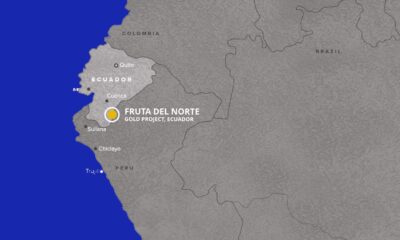
 Nyheter2 veckor sedan
Nyheter2 veckor sedanLundin Gold rapporterar enastående borrresultat vid Fruta del Norte
-

 Nyheter2 veckor sedan
Nyheter2 veckor sedanStargate Norway, AI-datacenter på upp till 520 MW etableras i Narvik
-

 Nyheter4 veckor sedan
Nyheter4 veckor sedanKina skärper kontrollen av sällsynta jordartsmetaller, vill stoppa olaglig export
-

 Nyheter4 veckor sedan
Nyheter4 veckor sedanKina har ökat sin produktion av naturgas enormt, men konsumtionen har ökat ännu mer





